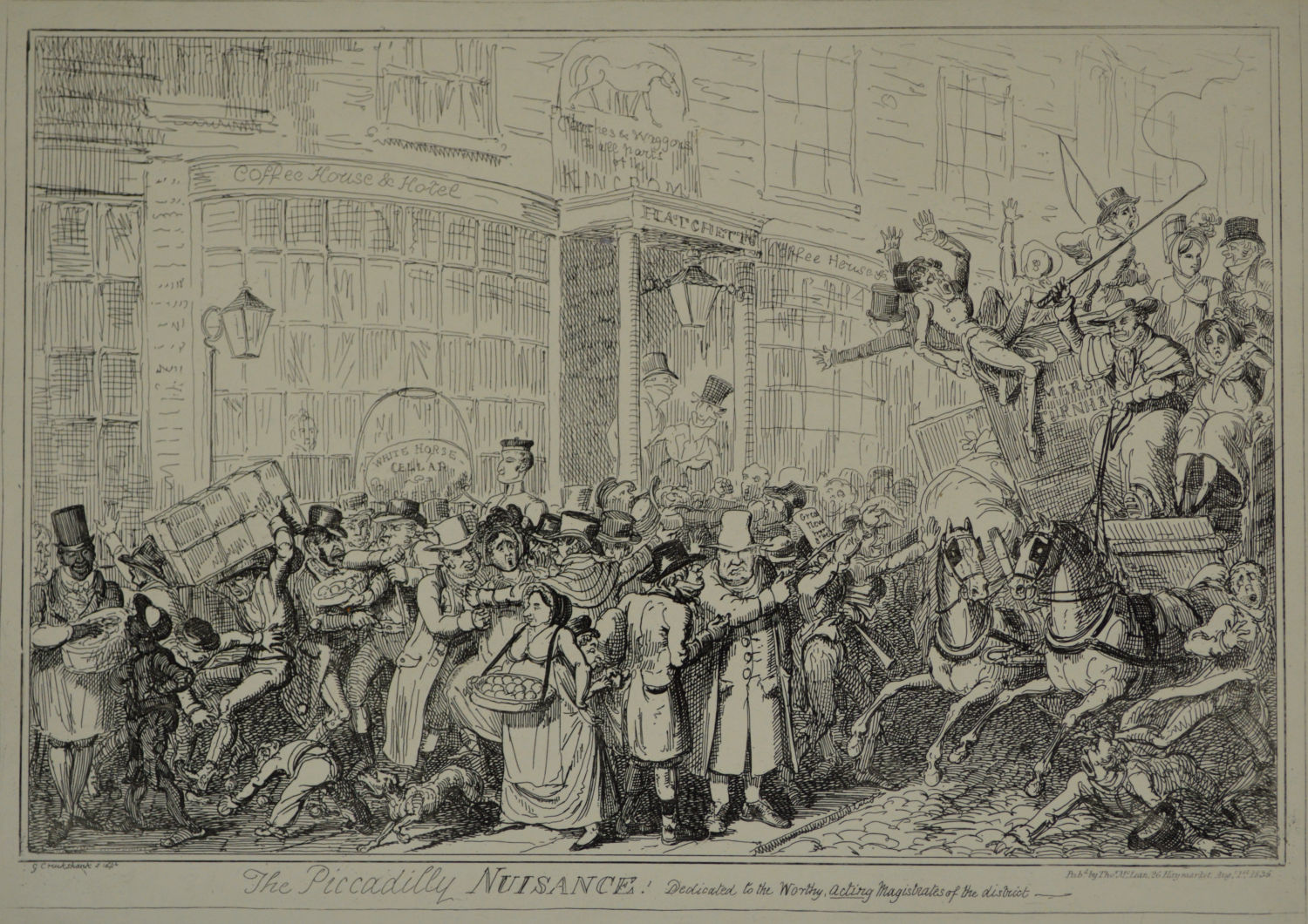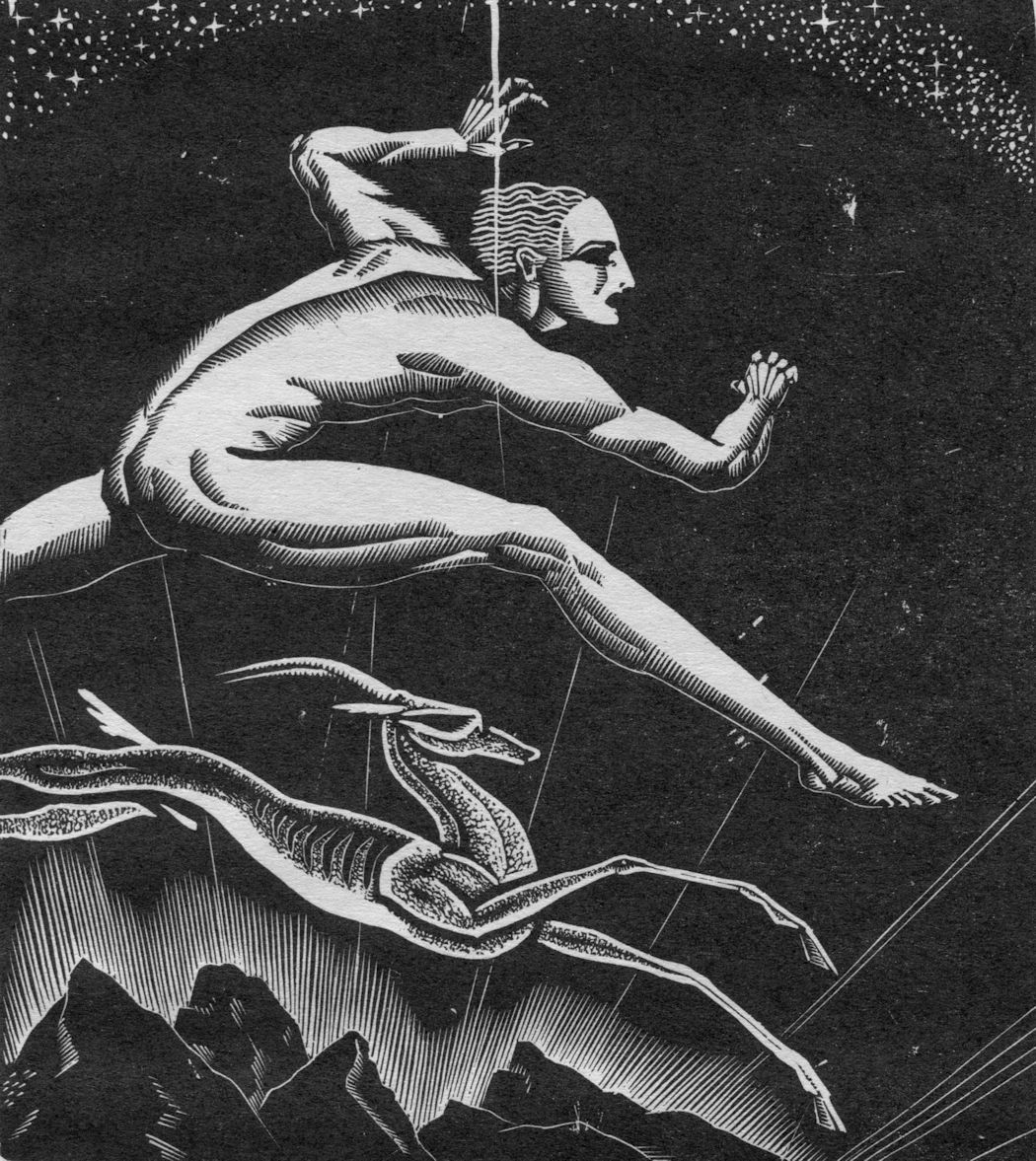George Cruikshank (1792 - 1878)
Prolific caricaturist and book illustrator George Cruikshank was born in London, the son of a leading caricaturist of the day, and the young boy began his artistic training as his father’s apprentice. By the time of his death, Cruikshank had created as many as ten thousand different prints and illustrations.
Initially known for his caricatures of English life that appeared in numerous publications, Cruikshank, along with Thomas Rowlandson and James Gillray, developed the symbolic John Bull, the personification of England. He was a fearless, if nonetheless patriotic, iconoclast who spared none of Britain’s royals and political leaders in his withering portrayals, and was regarded as the successor to William Hogarth, who held satirical sway over Britain during the preceding century. His work, typical of the era, was both xenophobic and racist, populated with gross caricatures of the Irish and Jews in particular.
As a book illustrator, Cruikshank contributed his work to three books by Charles Dickens including Oliver Twist, alienated the author by claiming much of the credit for the development of its plot, and breaking totally with Dickens when Cruikshank became an ardent advocate of temperance. As a leader of the National Temperance League, Cruikshank produced three famous suites of plates entitled The Bottle, The Drunkard’s Children, and The Worship of Bacchus. Following a long period of decline he died in London, leaving behind his second wife as well as the eleven children that he quietly fathered with his mistress, Adelaide Attree, who lived conveniently close by.

The Piccadilly Nuisance
Etching on wove paper, 1835; edition not stated. Image size 13-15/16” x 9-7/8”; sheet size 14-9/16” x 10-3/8”. Published by Thomas McLean. A well-inked, detailed impression with full margins. This is a reprint originally published by George Humphrey in 1818. A small closed tear from the right hand edge of the sheet to the plate mark, and an unobtrusive diagonal crease at the upper right-hand corner passing through the image border, otherwise an exceptionally clean, bright image in near fine condition.
$250
The British Museum online catalogue describes this complex image as follows:
"A disorderly mass of pedestrians fills the pavement outside the White Horse in Piccadilly, the street slanting in perspective from left to right. The pillared porch of the hotel is flanked by large curved windows, above which is the inscription 'Coffee House & Hotel'. The porch is inscribed 'Hatchetts', above it, against the wall, is the (pictorial) sign of a white horse, inscribed: 'Coaches & waggons to all parts of the kingdom'. Above the area railings, which are hidden by the crowd, is a placard (over the entrance to the basement): 'White Horse cellar coaches to all part[s]'. In the foreground (right) a coach and pair with outside passengers is driven recklessly (right to left) by a driver in a many-caped coat; an angry man sprawls by the horses' hoofs, another escapes to the right. A box-like coach or wagon facing in the opposite direction is on the off-side of the first; a man pushes a fat woman in at the back, while two outside passengers are about to fall from the roof, which is open. It is inscribed 'T[O] . . . MERS . . . TURNHAM' [? To Amersham by Turnham Green]. At the edge of the pavement stands a tough-looking coach-tout pointing out the Amersham wagon to an oafish-looking and would-be fashionable countryman whose pocket is being picked by a little Jewish boy; a Jewish woman with a basket of fruit slung from her neck deftly screens him. A raffish tout dressed as a coachman assails alarmed pedestrians with violent gestures. A stout John Bull pushes violently past a Jewish fruit-seller, spilling the fruit, while the Jew takes a watch from his fob. A boy diving for the falling fruit upsets a man carrying on his head and porter's knot a large corded chest. A little chimney-sweep with twisted shin-bones quizzes an amused negro servant, who holds a band-box, and is smartly dressed, but wears an apron. Facing the coaches stands a newsboy, holding up his papers to the passengers. He holds his horn; in his hat is a placard: 'Great News from St Hel[ena]'. Below, where the crowd is thickest in front of the hotel porch, men fight with fists. Two dandies stand under the porch, above the mêlée."
